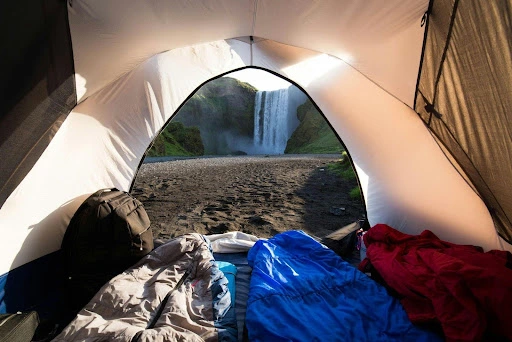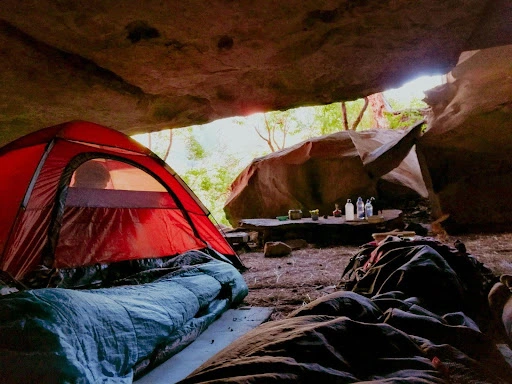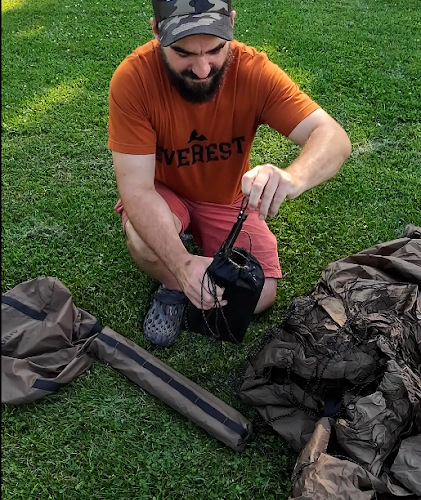Imagine this. You’re nestled in your sleeping bag beneath a canopy of stars, the gentle rustle of leaves lulls you into serenity, but there’s a hitch—you’re hardly comfortable. The ground is uneven and you think you feel a tree root poking you in the back. We’ve all been there, don’t deny it.
For outdoor enthusiasts, a camping sleeping pad isn’t just a luxury—it’s essential. Whether you’re backpacking through rugged trails or setting up a cozy campsite, your sleeping pad is your best friend in ensuring restful nights and energetic mornings.
Table of Contents
The Sleep Factor Why Comfort is Crucial in the Wild
Sleep recharges us, refueling our bodies and minds for the next day’s adventures. While camping offers an escape from city life, it shouldn’t mean sacrificing comfort. A good sleeping pad enhances insulation from the cold ground, provides cushioning, and contributes to overall sleep quality. Forgetting this crucial piece of gear could mean sleepless nights and less enjoyment of your trip.
Being well-rested isn’t just about feeling good. It’s about safety. Fatigue can lead to impaired judgment, especially on demanding hikes or challenging survival scenarios. The right sleeping pad ensures you wake up refreshed and ready, not groggy and aching.
When considering camping gear, remember this—the best experiences come from careful preparation. Your sleeping pad isn’t just an accessory; it’s your ticket to a successful outdoor excursion. Choose wisely, and your adventures will be as comfortable as they are unforgettable.
Types of Camping Sleeping Pads Navigating Your Options
Let’s explore the main types of camping sleeping pads. Each has unique features, suitable for different terrains and preferences..
- Inflatable Air Pads offer adjustable firmness and pack down small, making them ideal for backpacking. Yet, they require inflating and can be punctured, so handle with care. They’re perfect for those prioritizing comfort and portability.
- Self-Inflating Pads strike a balance between foam and air. They self-inflate to some extent, needing only minimal effort to adjust firmness. They’re generally more durable than air pads but tend to be heavier and bulkier.
- Foam Pads are the simplest—no inflation needed. These pads are durable, cost-effective, and provide decent insulation even when punctured. However, they’re bulkier, making them better for car camping or as an emergency backup on treks.
Each type has its strengths. Consider your camping style, the climates you’ll encounter, and how much weight you’re willing to carry.
Comparing Pros, Cons, and Durability of Sleeping Pads
Choosing the right sleeping pad involves weighing various pros and cons. Let’s dig deeper into each type, examining their unique attributes, ideal use cases, and durability considerations.
Inflatable Air Pads: shine in their portability and comfort, offering a plush sleeping surface. Their lightweight nature means they’re a favorite among backpackers. However, their susceptibility to punctures and the need for inflation are drawbacks. Ensure you have a repair kit handy and consider the terrain you’ll be using it on. I’ve poked many sleeping pads into oblivion in my travels, it’s not fun.
Self-Inflating Pads: offer hassle-free setup and moderate insulation. They’re popular with campers who want a balance between comfort and convenience. Their foam core adds durability but also weight. While not as prone to punctures as air pads, they can be bulky. Ideal for car campers or shorter treks where weight is less of a concern.
Foam Pads: are rugged and reliable, withstanding rough terrains without damage. Their affordability and durability make them great for beginners or budget-conscious campers. They’re bulkier, but that bulk brings peace of mind in unpredictable conditions. They’re excellent for minimalist campers or as secondary pads for added insulation. I use them as a base layer pad in the winter as it blocks a lot of the cold from the ground.
You can get away with just a closed cell foam pad but if you want real luxury then get an inflatable pad with a foam topper. To protect the pad I recommend using a cot so that it keeps it off the ground from any potential rain.
Factors to Consider When Choosing a Sleeping Pad
Selecting the perfect sleeping pad involves more than choosing a type. Here’s what to consider.
Weight and Packed Size matter for backpackers. Lightweight, compact pads are easier to transport, but may sacrifice durability or comfort. Evaluate your priorities—would you prefer a lighter load or a more comfortable sleep?
Insulation and R-Value indicate how well a pad blocks cold from the ground. Higher R-values mean better insulation, crucial for cold environments. Understand the climates you’ll camp in and choose a pad with appropriate insulation.
Sleeping Style plays a role too. Do you sleep on your back, side, or stomach? Side sleepers may prefer thicker pads for cushioning, while back sleepers might find thinner pads sufficient. Test different pads if possible to ensure comfort based on your sleeping habits.
Maintaining and Storing Your Sleeping Pad for Longevity
To get the most from your sleeping pad, proper maintenance and storage are key. Let’s explore how to care for your pad to ensure it serves you well for years to come.
Regular Cleaning: After each trip, clean your pad following manufacturer instructions, usually involving mild soap and water. This prevents dirt buildup and maintains the pad’s performance. I’ve accidentally left a pad dirty for too long and it started to grow mold – it is imperative you clean your pads.
Proper Storage: Store it unrolled and deflated in a cool, dry place. Avoid compressing it for long periods, especially self-inflating pads, to preserve their foam and inflation properties. Don’t put them away into storage if they are wet!
Repair Kits: Always carry one, especially for inflatable air pads. Promptly repair any punctures or leaks to prevent further damage. Familiarize yourself with patching techniques, so you’re never caught off guard in the wild.
By caring for your sleeping pad, you ensure it remains a reliable companion in all your outdoor pursuits and that you won’t have to fork out loads of money to replace it.
Wrapping Up Your Path to Comfortable Camping
Choosing the right sleeping pad is more than a purchase—it’s an investment in your camping experience. Whether you prefer the convenience of self-inflating pads, the simplicity of foam pads, or the comfort of inflatable air pads, each option has its place.
Remember to weigh your priorities, consider your camping style, and evaluate the environments you’ll explore. A well-chosen pad enhances your outdoor adventures, ensuring restful nights and energized days.











